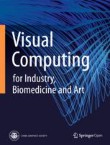China Graphics Society (CGS) is a national, academic, and non-profit organization. It’s founded in 1980 and is affiliated to China Association for Science and Technology. CGS gathers a large number of renowned experts, scholars and science and technology in realm of graphics, with a membership of over 100,000 people. CGS is one of the initiators of International Society for Geometry and Graphics (ISGG), and is its group member. CGS has actively assigned delegations to attend the international Conference on Geometry and Graphics (ICGG) held by ISGG and successfully hosted ICGG in China for many times.
Scalable point cloud meshing for image-based large-scale 3D modeling
Image-based 3D modeling is an effective method for reconstructing large-scale scenes, especially city-level scenarios. In the image-based modeling pipeline, obtaining a watertight mesh model from a noisy multi...
